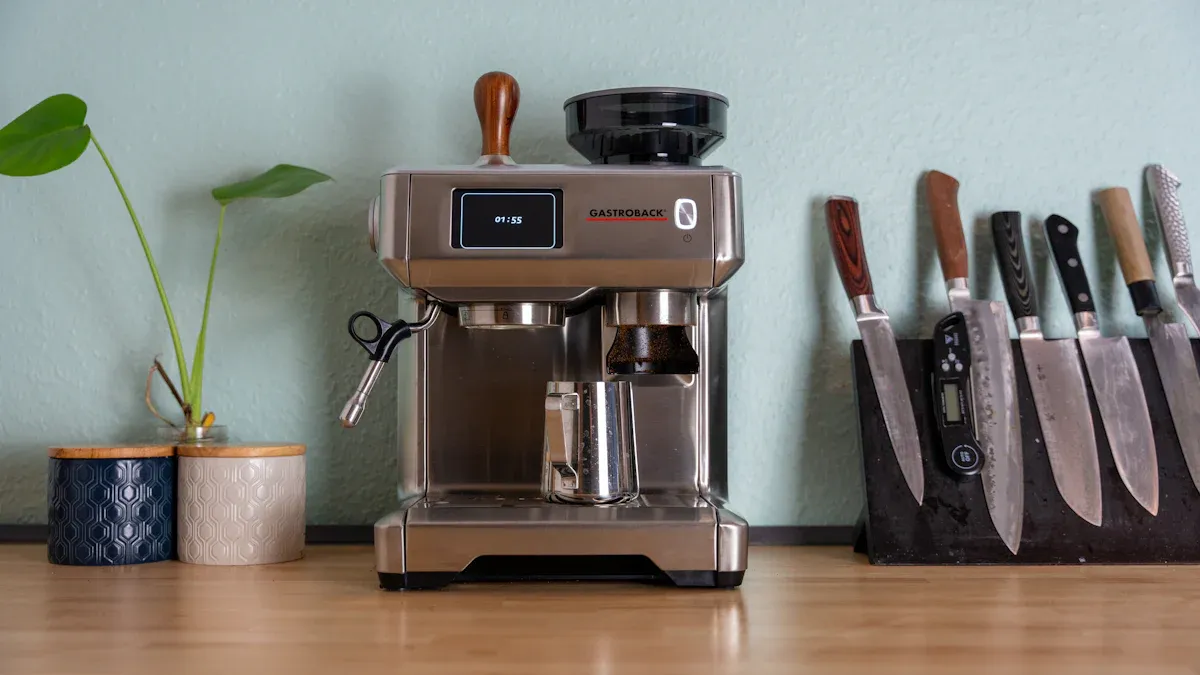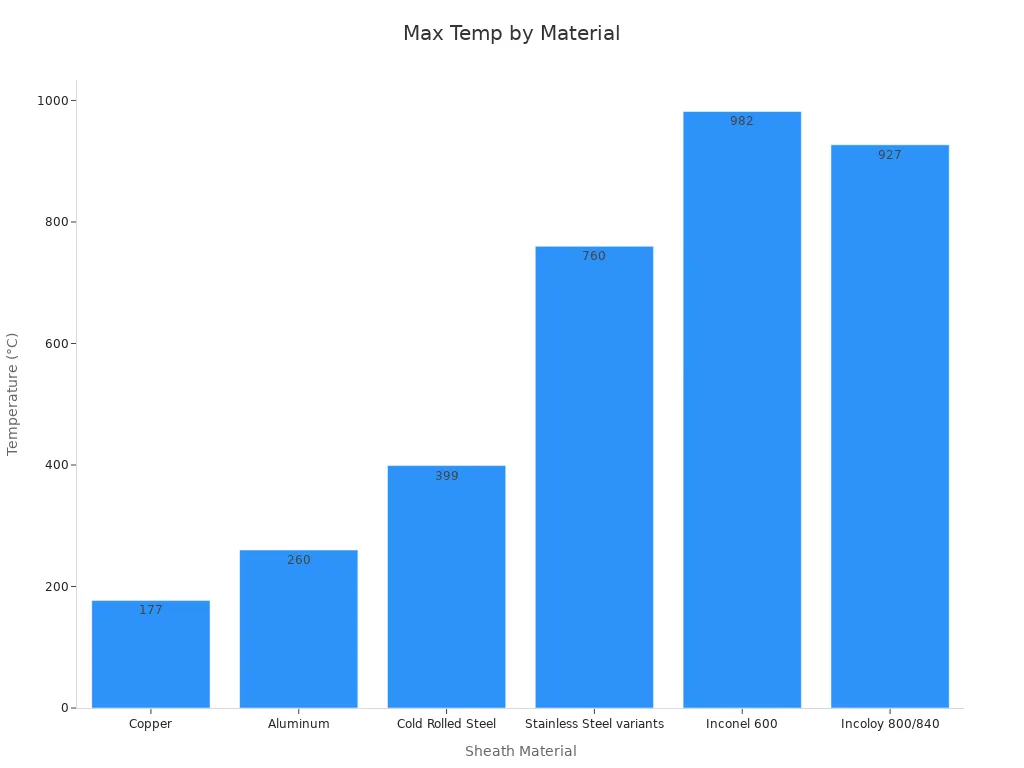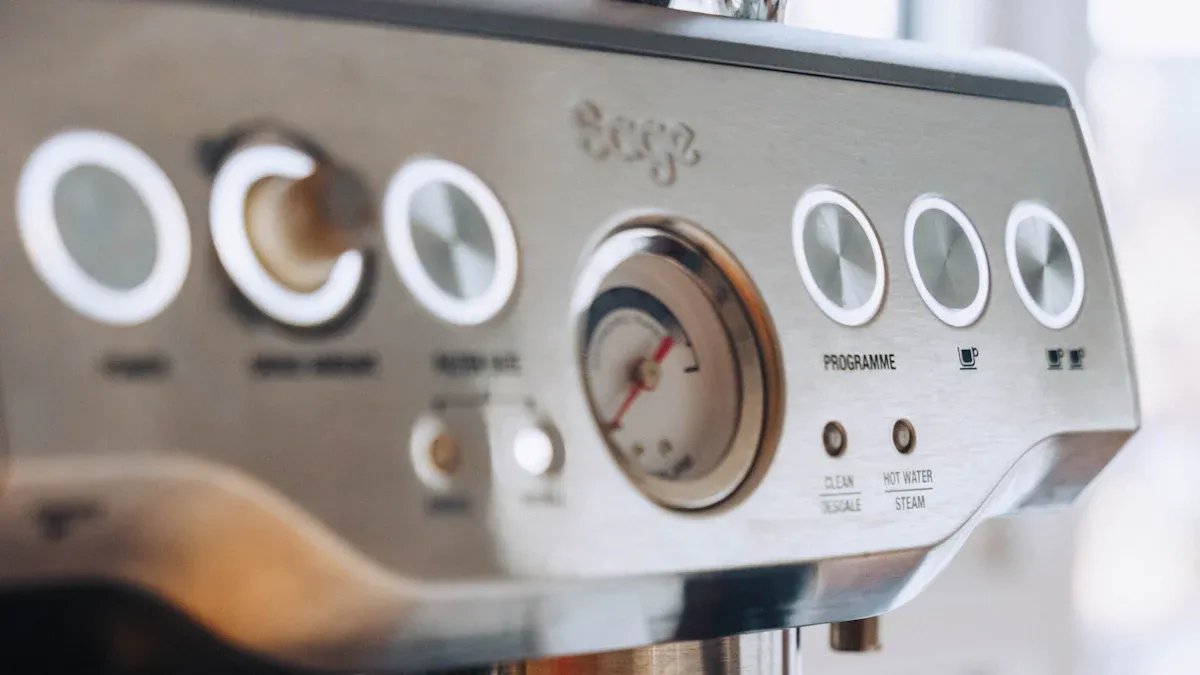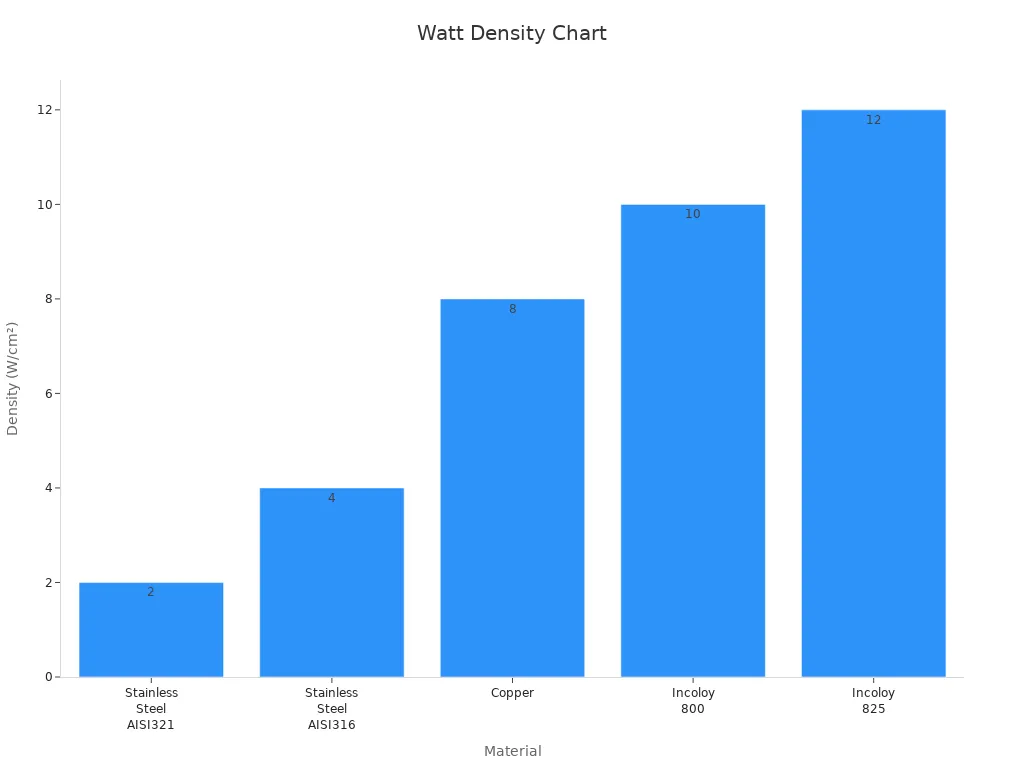
You can find different heating elements in home coffee machines. These include tubular, cartridge, immersion, band, and cast aluminum. Each type helps heat water fast. They also keep your coffee warm. These heating elements use energy. Some machines save a lot of energy. They can lower energy costs by up to 90% compared to old models.
Key Takeaways
Different heating elements heat water fast. They also keep coffee warm. These include tubular, cartridge, immersion, band, and cast aluminum.
Stainless steel and Incoloy last a long time. They do not rust easily. This makes them good for places with hard water.
Cartridge and band heaters get hot very fast. You can get your coffee sooner. You do not have to wait long.
Cleaning and descaling often help the heating elements work well. This also helps your coffee machine last longer.
Pick a heating element that matches how you brew coffee. Think about your energy use and how much care you want to give. This will help you enjoy your coffee more.
Types of Heating Elements
Tubular
Tubular heating elements are very common in home coffee machines. You can find them in drip coffee makers and espresso machines. Some warming plates use them too. These elements have a metal tube with a coil inside. The coil gets hot when electricity flows through it. The tube protects the coil and spreads heat evenly.
Tubular elements are special because you can bend them into many shapes. This helps them fit into different coffee machine designs.
Here is a table that lists the main features of tubular heating elements:
Component/Feature | Description/Specification |
|---|---|
Basic Components | Metal sheath, resistive coil, magnesium oxide insulation, cold pins for power connection |
Sheath Materials & Max Operating Temperatures | Copper (177°C), Aluminum (260°C), Stainless Steel (760°C), Incoloy (927°C), Inconel (982°C) |
Voltages | Up to 600 volts AC |
Sheath Diameter Range | 0.25 to 0.865 inches |
Design Flexibility | Custom shapes for different machines |
Applications | Coffee machines, water heaters, steamers, oil heating |

Tubular heating elements heat water fast and evenly. This gives you the right temperature for brewing. Your coffee tastes better because of this. Strong materials like stainless steel help them last a long time. They also do not rust easily.
Cartridge
Cartridge heating elements look like small metal sticks. You often see them in espresso machines where space is tight. These elements slide into holes in metal blocks or boilers. When you turn on the machine, the cartridge heats up quickly. It sends heat straight to the water or metal around it.
Cartridge elements let you control the temperature very well. This helps you brew espresso at the right heat every time. Some high-end drip coffee makers use them too. Their small size makes them easy to fit in small spaces.
Tip: Cartridge elements are best for machines that need quick heating and exact temperature control.
Immersion
Immersion heating elements sit right in the water inside your coffee machine. You can find them in some older drip coffee makers and electric kettles. When you turn on the machine, the element gets hot and warms the water.
Immersion elements heat water fast.
You should watch the water level so the element does not burn out.
If you do not stir or move the water, you can get hot and cold spots. This can change how your coffee tastes. Stirring helps spread the heat and keeps the temperature even.
Band
Band heating elements wrap around the outside of a metal container or boiler. You can find them in some espresso machines and warming plates. The band gets hot and sends heat through the metal to the water or coffee inside.
Band elements heat up quickly.
They help keep the brewing temperature steady.
They work well for making coffee and keeping it warm.
Studies show band heating elements can reach 90% of their target temperature in about one second. This means your coffee machine gets hot fast. You do not have to wait long for your coffee. The quick heating also helps keep the temperature steady for good coffee flavor.
Cast Aluminum
Cast aluminum heating elements use a block of aluminum with heating wires inside. You can find them in some high-end espresso machines and warming plates. The aluminum spreads heat very well, so the temperature stays even.
Cast aluminum elements last a long time. The aluminum does not rust and can handle bumps. These elements can work at high temperatures for years. The strong and light aluminum also helps your coffee machine use less energy.
Note: Cast aluminum heating elements are popular because they are strong, save energy, and spread heat evenly.
Heating Elements: Materials and Construction

Common Materials
Coffee machines use different materials for heating elements. Each one has a special job. Here are the most common ones:
Aluminum: This metal spreads heat fast. You see it in cast aluminum elements. Aluminum does not rust, so it lasts long.
Copper: Copper moves heat very well. Some machines use copper for quick heating. It bends easily, so it can make many shapes.
Stainless Steel: Stainless steel does not rust and can take high heat. Many drip coffee makers and espresso machines use it. It is strong and safe for food.
Incoloy: Incoloy is a kind of alloy. It can handle very high heat. You find it in machines that need to last many years.
Tip: If you want a coffee machine that lasts long, pick one with stainless steel or Incoloy heating elements.
Here is a table that shows why each material is used:
Material | Main Benefit | Common Use |
|---|---|---|
Aluminum | Fast heat transfer | Cast elements, plates |
Copper | Flexible, heats fast | Tubular, immersion |
Stainless Steel | Rust-resistant, strong | Tubular, cartridge |
Incoloy | Handles high heat | High-end machines |
How They Work
Heating elements make heat by using electric resistance. When you turn on your coffee machine, electricity goes through a wire inside the element. The wire pushes back against the flow. This makes the wire hot. The heat moves to the water or metal around it.
Manufacturers put heating elements in place in different ways. Some get pressed or crimped in. Others use rivets or screws to hold them tight. This keeps the element safe and helps it heat evenly.
You do not need to see inside to know it works. When you hear your coffee machine hum or feel it get warm, the heating element is working.
Pros and Cons
Efficiency
You want your coffee machine to heat water fast. You also want it to use less energy. Different heating elements do this in their own ways.
Electric resistance heaters change almost all electricity into heat.
Some heating elements, like convector types, use less energy but still keep coffee hot.
Radiant heaters can use more energy because they heat more than just water.
Personal heating devices use less power but still give good comfort and save energy.
If you set your coffee machine hotter, it can lose more heat. This means it uses more electricity. Finding the right setting helps you save energy and keeps your coffee hot.
Durability
You want your coffee machine to last a long time. The heating element type and its material matter for how long it works.
Stainless steel and Incoloy heating elements do not rust and handle high heat well.
Aluminum and copper heat up fast but may not last as long with hard water.
Most electric water heater elements last 6 to 10 years. Hard water can make them wear out faster by causing scale.
Here is a table to compare durability:
Material | Durability | Notes |
|---|---|---|
Stainless Steel | High | Rust-resistant, strong |
Incoloy | Very High | Handles high heat, corrosion |
Aluminum | Medium | Fast heat, less durable |
Copper | Medium | Flexible, can corrode |
Maintenance
You need to care for your coffee machine to keep it working well.
Check the heating elements every six months, especially if you have hard water.
Clean off mineral deposits with a brush or vinegar soak.
Flush the tank every 3 to 6 months to get rid of sediment and help it work better.
Using water softeners can stop scale from building up and help your machine last longer.
Cleaning your machine often keeps your coffee tasting good. It also helps your machine last longer. If you do not clean it, you might have to replace parts more often.
Comparison Table
Key Features
When you look at heating elements for coffee machines, you notice big differences. They are not all the same in power, material, or how they control heat. The table below lists the main features for each type. You can use it to help pick the best one for your needs.
Heater Type | Power Range | Voltage Range | Material | Application | Temperature Control | Durability Characteristics |
|---|---|---|---|---|---|---|
Tubular Heater | 500W – 5kW | 110V – 480V | Stainless Steel / Incoloy | Boilers, espresso machines | Thermostats, controllers | High durability, rust-resistant |
Immersion Heater | 500W – 3kW | 110V – 240V | Stainless Steel / Copper | Direct liquid heating, brewing tanks | Adjustable thermostats | Long-lasting, corrosion-resistant |
Band Heater | 500W – 4kW | 110V – 240V | Stainless Steel / Incoloy | Cylindrical tanks, boilers | Thermostatic control | Robust, even heat distribution |
Cartridge Heater | 100W – 1.5kW | 110V – 240V | Stainless Steel / Incoloy | Small coffee machines | Built-in thermostat | Excellent heat transfer |
Ceramic Heater | 200W – 1.5kW | 110V – 240V | Ceramic Materials | Small coffee makers, espresso | External thermostat | Stable temp, energy-efficient |
Tubular and band heaters are good for bigger machines. Cartridge and ceramic heaters work well in smaller or more exact coffee makers. Immersion heaters heat water directly and last a long time.
You should also think about watt density when picking a heating element. Watt density tells you how much heat fits in a small area. If the watt density is high, the element heats up faster. But if you do not use it right, it might wear out sooner.

Stainless steel and Incoloy elements can handle high watt density. They last longer even when used a lot.
Copper heats up quickly but works best with clean water.
Ceramic heaters keep the temperature steady and save energy.
Tip: If you want a coffee machine that heats fast and lasts, choose stainless steel or Incoloy heating elements with good temperature control.
Choosing the Right Heating Element
Factors to Consider
When picking a heating element for your home coffee machine, you should think about a few key things. These choices affect how your machine works and how long it will last.
Material Quality: Stainless steel 316L does not rust and lasts a long time, even with hard water. Ceramic or PTC coatings help stop scale from building up. This makes cleaning easier and helps the element last longer.
Temperature Consistency: Keeping the water at the same temperature gives you better coffee taste. Machines with sensors or PID controllers help keep the heat steady while brewing.
Energy Efficiency: Using less power when the machine is not brewing can save you up to 20% on your energy bill. Efficient heating elements also help the planet by using less electricity.
Safety Features: Anti-dry-burn protection and auto-shutoff help keep you safe. They also stop the machine from getting damaged.
Maintenance Needs: Designs that are easy to clean and coatings that stop scale make it simple to care for your machine. You will spend less time cleaning and more time drinking coffee.
Brewing Needs: The kind of coffee you like is important. Thermoblocks are good for espresso. Heating coils work well for drip coffee. Capsule machines often use PTC ceramic elements.
Certifications: Look for UL, CE, or LFGB marks. These show the machine is safe and made with good quality.
Quick Heating: Machines that heat up fast mean you do not have to wait long for your coffee. This is great if you want espresso or need coffee quickly in the morning.
IoT and Smart Features: Some new machines let you use your phone to control the temperature and energy use. These features make it easier to get your coffee just right.
Tip: Always pick a heating element that matches how you like to brew and how often you use your machine. This helps you get the best coffee and makes your machine work well.
You can pick from different heating elements for your coffee machine. Tubular and band types are good for drip and espresso machines. Cartridge and cast aluminum types heat up fast in small spaces. Immersion types warm water directly but need extra care.
Surveys say people listen to user reviews and contractor tips when choosing.
Studies show it is important to check how well the machine works and how easy it is to care for.
Pick a type that fits how you make coffee. Try to find models that use less energy and last a long time.
FAQ
What heating element works best for hard water?
Pick stainless steel or Incoloy heating elements. These materials do not rust or get scale easily. They last longer when your water is hard.
What signs show a heating element needs replacing?
If your coffee heats up slowly, the element may be bad. You might also see uneven brewing temperature or no heat at all. Weak or cold coffee can mean the element needs to be checked.
What is the safest heating element for home coffee machines?
Stainless steel and ceramic heating elements are very safe. They do not rust or let out harmful chemicals into your coffee.
What maintenance helps heating elements last longer?
Clean your coffee machine every few months. Use vinegar or a descaling solution to get rid of mineral buildup. This helps the heating element work well for a long time.
What heating element gives the fastest heat-up time?
Cartridge and band heating elements get hot very fast. These types are good if you want your coffee machine ready in just a few seconds.


